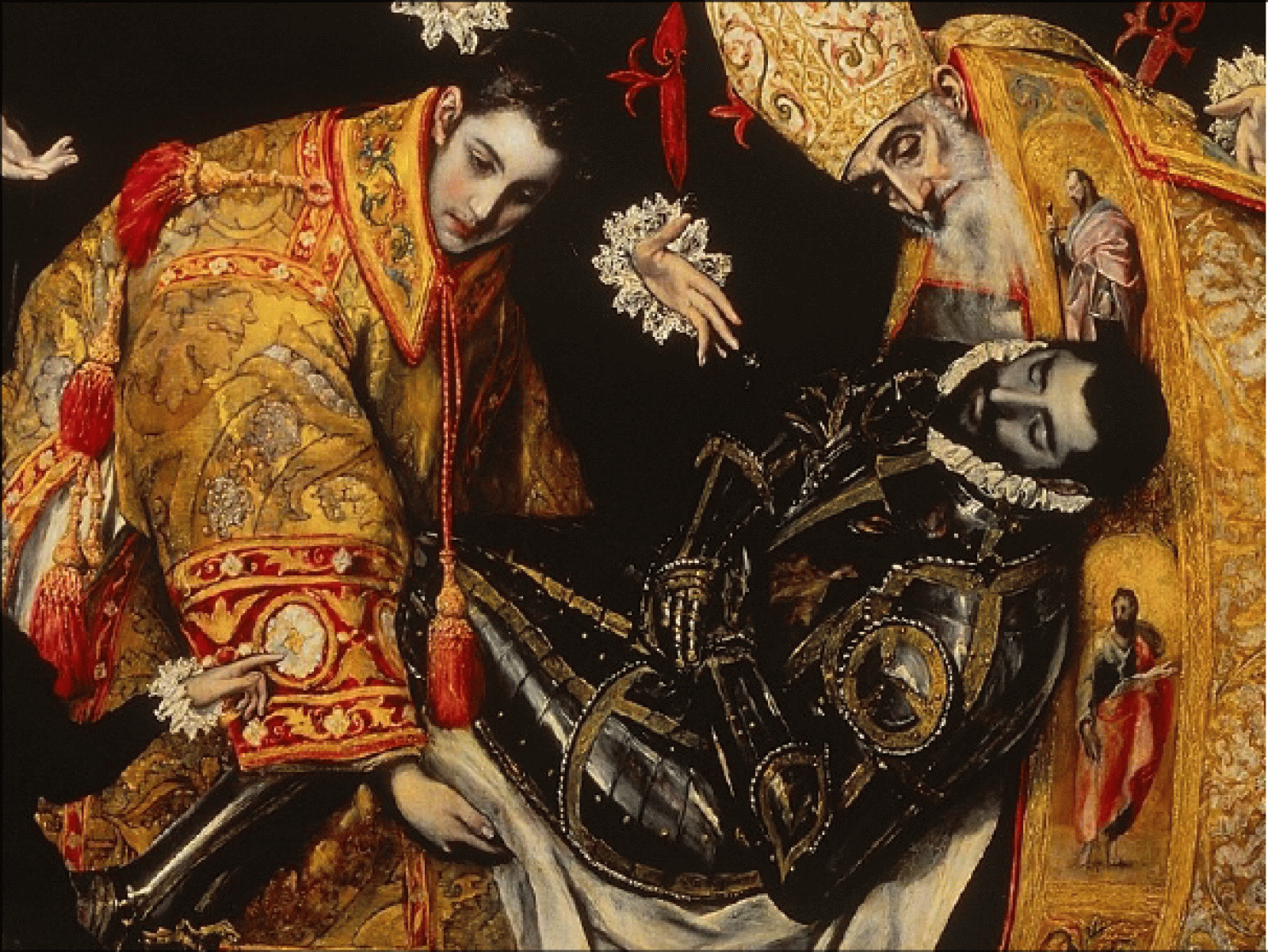KHI 2021+ Lecture Series
Diane Bodart: In the Mirror of Armor

El Greco, The Burial of the Count of Orgaz, 1586-88, Toledo, Santo Tomé (detail)
In the early fifteenth century, while new treatments of steel surfaces elaborated in Northern Italy made armor as shiny and reflective as a mirror, the refinement of glazes reached by oil painting in the Low-Countries allowed the representation of such optical effects. At the encounter between these two new technologies, the pictorial detail of the reflection became the site for experimentation with its transformative potentialities. Reflections on armor, like those on mirrors, may operate a process of abyme, shedding light on the broader perspectives of the whole composition of the painting, and revealing its “scenario of production”. But reflections on armor, distinct from those on mirrors, are also embedded on the body of the protagonist of the pictorial representation, activating the dynamic interface between interior and exterior that is peculiar to the act of wearing images. Connecting the body of the hero to the narrative scene or even to the realm of the viewer, reflections on armor bring forth issues involving the agency of images and the temporality of painting. The paper will investigate how this emblematic detail challenges the artistic creation in the early modern period and accurately registers, as a sensitive seismograph, its periods of transition.
Diane Bodart is David Rosand Associate Professor of Italian Renaissance Art History at Columbia University. The author of Tiziano e Federico II Gonzaga (Rome, 1998) and Pouvoirs du portrait sous les Habsbourg d'Espagne (Paris, 2011), her research focuses on early modern art in Italy and in the Spanish Hapsburg Empire, with special attention to the relation between art and politics and between image theory and the processes of artistic creation. Her forthcoming book, La peinture au miroir de l’armure (Brepols), investigates the transformative processes of early modern painting through the lens of the pictorial detail of reflections on armor. She is currently co-curating Gribouillages (Villa Medici, Rome – Beaux-Arts, Paris, 2022), an exhibition that explores the role of unconventional drawing practices such as scribbling and doodling in artistic creation.
This talk is part of the KHI 2021+ Lecture Series, organized by the doctoral and postdoctoral fellows, in collaboration with scientific staff and senior scholars of the Institute. It is envisioned as a forum to reflect on the futures of Art History through conversations with innovative voices in the discipline, working in different areas but sharing methodological concerns.
07. April 2021, 15:00 Uhr
KHI 2021+ Lecture Series
The event takes place online.
Hinweis
Diese Veranstaltung wird durch Fotografien und/oder Videoaufnahmen dokumentiert. Falls es nicht Ihre Zustimmung findet, dass das Kunsthistorische Institut in Florenz Aufnahmen, auf denen Sie erkennbar abgebildet sein könnten, für die Veranstaltungsdokumentation und Öffentlichkeitsarbeit (z.B. Social Media) verwendet, bitten wir um eine entsprechende Rückmeldung.


